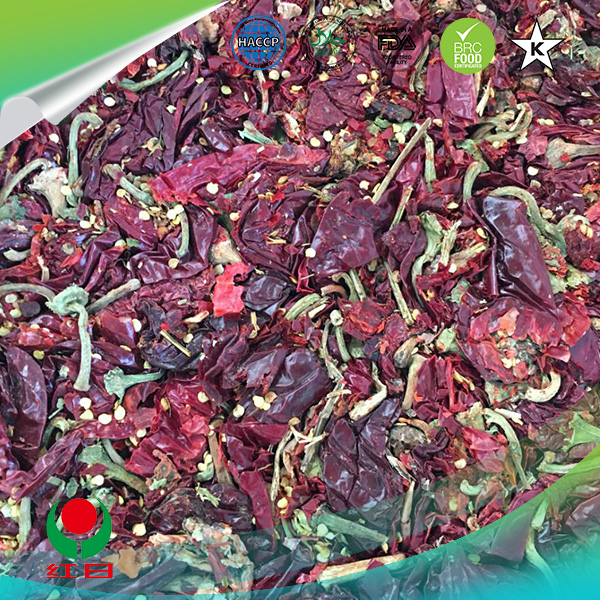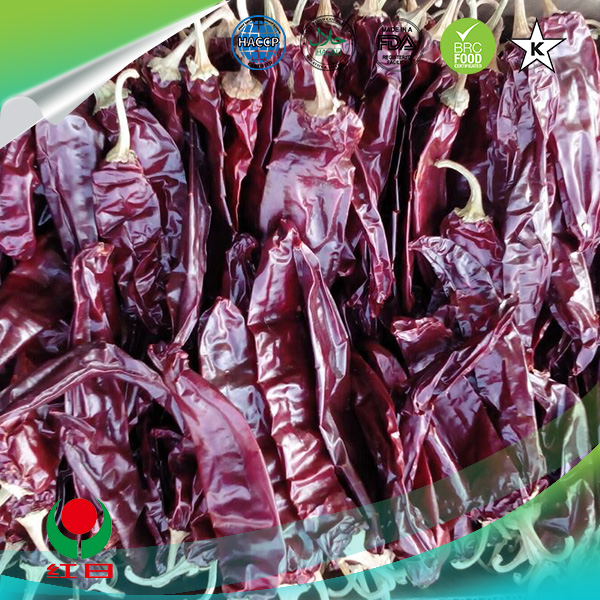- No. 268 Xianghe Street, Economic Development Zone of Xingtai city, Hebei 054001 China
- Byron@hbhongri.cn
Red Papper Pods – Sun-Dried, Bold Flavor, Bulk Supply
If you’re sourcing Red Papper Pods—often called paprika pods in procurement sheets—here’s the ground truth from someone who has stepped through Hebei drying yards and (once) left with shoes full of capsicum seeds. China now grows most of the world’s paprika, and, to be honest, that concentration brings both consistency and scrutiny.

Market snapshot and why it matters
Demand for clean-label color is pushing buyers toward high-ASTA pods with low heat. Extractors want predictable pigment for oleoresin; snack brands want a warm hue without blowtorch heat. Meanwhile, EU MRLs and aflatoxin limits are tightening, so robust testing and steam-sterilized lots are, frankly, the new baseline. It seems that Hebei’s processors—especially around Xingtai—have leaned into traceability to stay ahead.

Technical specifications (typical export grade)
| Parameter | Spec / Range (≈) | Method / Standard |
|---|---|---|
| Variety | Capsicum annuum (paprika type) | — |
| Origin | No. 268 Xianghe Street, Xingtai, Hebei, China | Traceable lot IDs |
| Color Value (ASTA) | 120–160 ASTA | ASTA 20.1 |
| Heat (SHU) | ≈200–800 SHU (mild) | ASTA 21.3 |
| Moisture | ≤12% | ISO 939 |
| Aflatoxins | B1 ≤5 ppb; Total ≤10 ppb | HPLC; EU 1881/2006 |
| Microbiology | TPC ≤1×10^5 cfu/g; Salmonella absent/25g | ISO/FDIS methods |
| Foreign Matter | ≤1.0% | Visual/optical sort |
| Shelf Life | ≈24 months sealed, cool & dry | Real-world use may vary |
| Packaging | 25 kg bags / cartons with PE liner | Food-grade |
Process flow & quality controls
Materials: field-ripened pods from contract farms. Methods: de-stemming, hot-air drying (≈55–65°C), cleaning, optical sorting, metal detection, and short-time steam sterilization. Testing: ASTA color, moisture (ISO 939), aflatoxin (HPLC), pesticide residues (per EU 396/2005; GB 2763). Documentation: batch CoA, allergen and GMO statements. Service life: about two years if oxygen and light are managed tightly.
Applications
- Seasoning blends and meat rubs (warm color, gentle heat)
- Chorizo and charcuterie color; soups/sauces
- Snack coating lines (dusting) and meal kits
- Oleoresin extraction for natural colorants
Why teams pick Red Papper Pods from Hebei
Color stability, mild SHU, and—surprisingly—better extract yield consistency. Many customers say the hue “pops” without tipping spicy.
| Vendor (indicative) | Traceability | ASTA Range | Certs | Notes |
|---|---|---|---|---|
| Hongri (Xingtai) | Farm → lot → CoA | 130–160 | ISO 22000, HACCP, Halal, Kosher | Steam-sterilized, stable supply |
| Generic Trader A | Mixed origin | 100–140 | Varies | Lower price, variable color |
| Small Farm Co‑op | Plot-level | 120–150 | HACCP | Tight MOQs; artisanal lots |
Data above is indicative, compiled from public specs and buyer feedback; real-world results may vary by crop year.

Customization
- Color grades (≈110–170 ASTA)
- Heat tuning via varietal blending
- Sterilization: steam preferred; EO on request
- Cut size: whole pods, flakes, or milling-ready
- Packing: 25 kg, nitrogen-flushed options
Mini case study
An EU snack brand shifted to Red Papper Pods from Xingtai for a paprika-dusted crisp. Outcome after two quarters: color variance (ΔASTA lot-to-lot) tightened by ≈18%, and shelf hue retention improved by about 3 months under ambient D65 light testing. QA also reported zero Salmonella detections across 40 lots—exactly what finance likes to see, even if they’ll never admit it.

Certifications & compliance
Commonly offered: ISO 22000, HACCP, Halal, Kosher, plus FSMA-ready documentation. Testing aligns with ASTA methods, ISO microbiology, EU 1881/2006 for aflatoxins, and EU 396/2005 MRLs. Codex hygiene guidance for low-moisture foods is a sensible extra tick box.
Industries buying these pods
Spice blenders, meat processors, snack factories, ready-meal brands, and oleoresin extractors. Actually, a few craft hot-sauce makers use them for color depth without adding much burn.
References
- ASTA Analytical Methods, incl. 20.1 (Color) and 21.3 (Pungency)
- ISO 22000:2018 Food Safety Management Systems
- EU Regulation 1881/2006 (Aflatoxin maximum levels)
- FDA, Draft Risk Profile on Spices & Herbs (2013)
- Codex CAC/RCP 75-2015, Code of Hygienic Practice for Low-Moisture Foods
- EU Regulation 396/2005 on pesticide MRLs
-
Capsicum frutescens oleoresin – High Purity, Food GradeNewsNov.17,2025
-
Capsicum Frutescens Oleoresin – Natural Heat & FlavorNewsNov.17,2025
-
Peppereka Powder – Fresh, Vibrant Color & Sweet AromaNewsNov.17,2025
-
Paprika Oleoresin | Natural Red Color, Heat & Flavor BoostNewsNov.17,2025
-
Pure Turmeric Extract 95% Curcumin | Potent, Lab-TestedNewsNov.17,2025
-
Red Papper Pods – Premium Sun-Dried, Bold Heat & AromaNewsNov.10,2025







